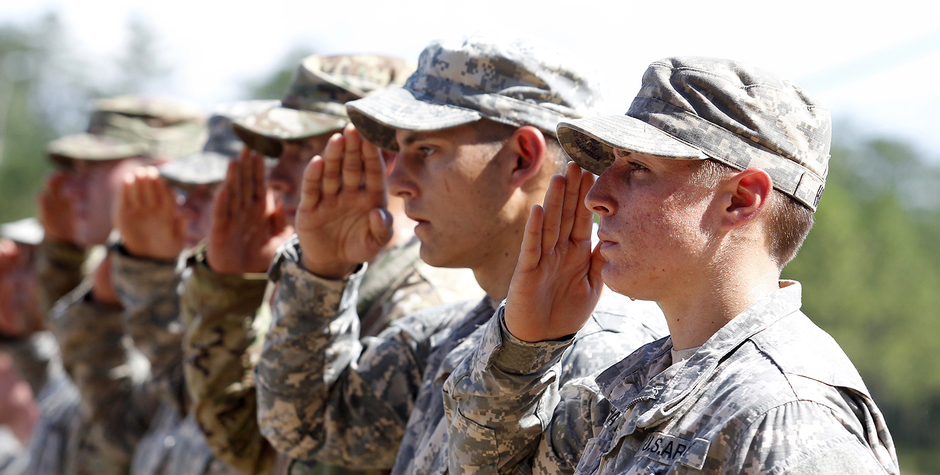Financing Our Nation's Security
We live in a dangerous world. The threats to our homeland have never been more real and diverse. The continued growth of Radical Islamic Terrorism, the ongoing efforts of North Korea to perfect a long-range missile on which a nuclear warhead can be placed, China’s disruption of the status quo in the Pacific by claiming territory in the international waters of the South China Sea, Iran’s harassment of U.S. Navy vessels, and Russia’s continued aggression in the area of the Ukraine and Eastern Europe are some of the potential dangers we face as a nation. The threat landscape for Western Civilization is complicated, asymmetrical and multi-faceted. The threats are sobering and very real.
One of the most important actions Congress takes each year is to approve the federal budget and one of the most important parts is the defense budget. The Defense Appropriations Bill (HR 5293) passed the House of Representatives June 16th by a vote of 282 to 138. The Senate Armed Services Committee passed the proposed budget on May 26 by a unanimous vote. The full Senate has yet to approve this critical portion of our spending, partly due to a filibuster by Democrats in the Senate. If the 2017 National Defense Authorization Act (NDAA) is not passed by the beginning of the fiscal year (FY) on October 1st, the military will be required to operate on Continuing Resolutions which means the present budget requests will be placed on hold.
The Army proposed a base budget of under 123 billion dollars, a cut from last year. They are asking for an additional 25 billion for Overseas Contingency Operations (OCO) which are the funds used in our operations in dangerous places like Afghanistan, Iraq and Syria; this is the money used to fight ISIS.
However, the Army (as well as other military services) is struggling to meet the demands of world-wide deployments and operations while complying with demands from the Administration to rein in spending as they move towards the goal of decreasing the size of the active Army to 450,000 by FY 2018. As General Mark Milley, the Army Chief of Staff, said to the U.S. Senate, “Readiness wins wars.” The Army is slashing everything that does not contribute to their mission of defending the nation in combat operations.
But the tight budget and the Administration’s commitment to reducing the size of the military is affecting what the Army spends on training. During the 26 years that I spent in the Army , I often heard and repeated the Army’s readiness mantra: We train as we fight. Realistic and regular training is the foundation of readiness. When training suffers, the ability of the Army to fight and win a war suffers accordingly. To safeguard training, the Army is making drastic cuts in weapons procurement and other vital equipment. But weapons and equipment are also vital to success in combat operations, to include “force protection” for the men and women in uniform in the dangerous places to which they deploy.
Secretary of the Army Patrick Murphy told Congress there is not one major modernization program planned for the entire remainder of the decade. Think about that. In testifying before Congress, he stated that he is making “ruthless decisions” in order to avoid “mortgaging future readiness.”
If Congress and the White House cannot agree on spending priorities, it will require drastic and deeper cuts in defense spending. If that happens, all the planning and belt-tightening by the Army in order to protect training and combat readiness will categorically fail. That could also bring the goal of 450,000 troops in FY 2018 (which begins in October 2017) down to an even lower 420,000 Soldiers, the smallest Army since 1939. The National Commission on the Future of the Army has emphatically stated that a force this size is “inadequate to meet the nation’s requirements at acceptable levels of risk.”
Meanwhile, according to a report on July 12, 2016, in The Daily Signal, the Air Force is short 700 pilots today. In 2015 the Navy had 11 planes down for major overhaul; it is projected that in 2017 they will have a backlog of 278 planes temporarily out of service. Marine Corps pilots require 10 hours of flight time a month to stay current on training; they are now averaging 4 hours a month due to budget constraints. The Army in its 2016 “Defense Strategic Guidance” estimates that only one-third of its forces are combat ready, again due to equipment and training issues.
The United States is, indeed, the leader of the free world and its only remaining superpower. The rest of the world looks to our nation for leadership as we lead the fight against those who would destroy all that we hold dear. The Senate and the Obama Administration need to give our military not only their gratitude and praise---but also give them the resources they require in order to protect our people and our vital interests at home and abroad.
